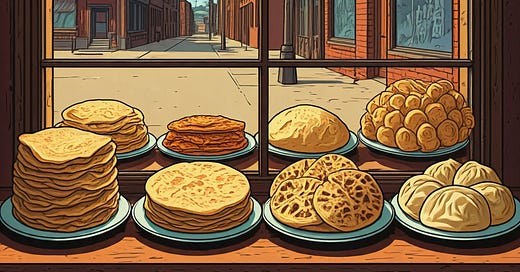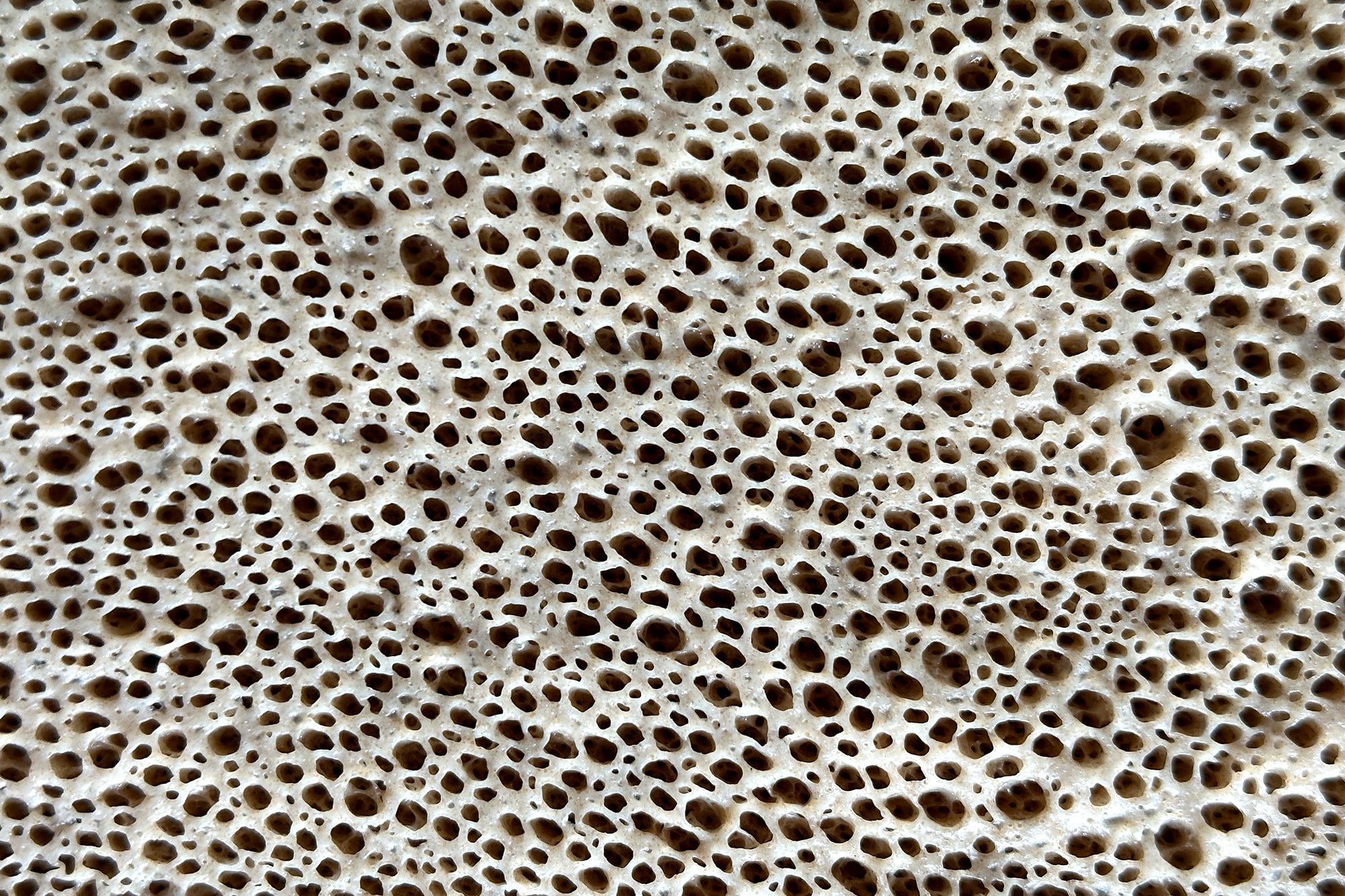Injera, Pupusas & Momos in Small Town Ohio
And the short but fascinating existence of a Somali-Peruvian restaurant.
For a little while, there was a Somali Peruvian restaurant on a north side Columbus neighborhood, just around the corner from the Ohio Department of Taxation. I don’t say this casually. To me, it was a big deal. Inside the bones of a former fast-food restaurant, a charcoal-fired, 450-degree Hermanos Ruiz oven with eight spits imported from Peru was used to make both pollo a la brasa and rotisserie goat.
The oven was from an older Peruvian restaurant that sat unused for years in the former owner’s son in law’s garage. The son in law and a couple of Somali born neighbors started cooking with the oven and they started to find overlaps in the two cuisines, like the use of paprika and camelid meat, and even some dishes that are strikingly similar, like lomo saltado and suqaar, and picarones and kac kac. They decided to open a restaurant around this confluence of their two cuisines. They called it The Mix.
The restaurant opened in late 2019, just before the pandemic. Through all of the chaos and shutdowns of 2020, it only lasted about a year, though I was fortunate enough to visit during that time. The menu was short but profound. There were proteins like rotisserie halal chicken and goat, as well as stewed camel meat and fish, served on rolls or in bowls over bariis iskukaris, Somali-style basmati rice. The sides and appetizers included things like yuca fries with ocopa sauce and sambusas. For me, The Mix is the best symbol of how the Ohio I grew up with has changed.
Immigration in small town Ohio has become a talking point in the 2024 U.S. elections, reaching a climax when former President Donald Trump, after days of provably false statements from his campaign about Haitians in Springfield eating dogs and cats, brought it up in a televised debate. I haven’t been to Springfield since a soccer game when I was a kid, so I cannot speak of the full situation there, though I can tell you what I have seen happen in my Ohio hometown, Reynoldsburg, and others like it.
Until about 20 years ago, Main Street, U.S. Route 40, was the center of town. It had been that way since 1831 when it was founded, and when it was a stop on the Underground Railroad. Growing up, it was lined with mostly small, locally owned businesses mixed in with fast food chains. Then the big box stores started opening in areas on the outskirts of town. Dozens of them. Target. Walmart. Best Buy. Michael’s. Home Depot. They were surrounded by fast food and restaurant chains. O’Charley’s. KFC. Olive Garden. Chipotle. Smokey Bones. The more of these that appeared, the more Main Street died, turning into a wasteland of smoke shops, advance check cashing stores, and pharmaceutical chains.
Over the last five years, maybe a little more, a funny thing started to happen. Immigrants started opening businesses in all those abandoned buildings on Main Street and in faded strip malls in other corners of town. Many arrived from places like Nepal, El Salvador, Mexico, Ethiopia and beyond to work, legally, at warehouses nearby, but since have opened restaurants, bakeries, clothing shops, grocery stores and places of worship. Now, when I visit, Main Street feels full of life again.
The Nepalese-Bhutanese residents, now almost a quarter of the total population, is gradually transforming the cityscape for the good, creating more than a 100 different businesses. There is a Dashain-Diwali festival and Nepalese members on the city council. When home, I now bounce around between Sargam, Jayaho and other Nepalese restaurants ordering biryani and momos. At Darshan, with leather booths recycled from another restaurant’s closing sale and a drawing of the Himalayas on one wall, I order the thali platters and visit the bubble tea shop they opened next door. At Durbar, in the same building where I had my first job making pizza, I’ve come to love lamb sekuwa, roasted on a tandoor.
Elsewhere, at Amani’s Home Bakery, near the Dairy Queen, where I can find fresh baked injera, the spongy Ethiopian flatbread made from teff flour, and shelves lined with cardamom and coffee, while at El Fogoncito I can get my al pastor taco fix. At El Burrito Loco, across from where a department store pulled out long ago and left a gaping hole at one of the busiest intersections, there are cheese and loroco flower pupusas. Right by my old high school, at La Jalisciense in what was once a baseball card shop, I sit at the counter and eat tacos de cabeza y tripa. There has never been, not in the tiniest bit, this many delicious things to eat in the town of Reynoldsburg. Long time residents here, and towns like it all over Ohio, are understandably confused.
Main Street looks different now.
In Ohio, they’re eating injera,
and chicken thukpa by the pound.
Where there was once a K-Mart,
they’re selling boba and tamales.
There’s a trompo by the mayor’s office,
and lengua by the park.
Despite the fears, amplified by algorithms, the truth is, Main Street changed a long time ago. The soul of it has been chipped away at, and has trickled outward for years. Those big box stores provided short term jobs with little growth, with profits that continue to leave the community, floating away to corporate offices in another state. These small businesses that have arrived are a chance to reverse the trend.
Intolerance and xenophobia, like the kind we saw on TV, will bubble up from time to time. These new neighbors will be called “others,” by the ones who yell the loudest, who will latch on to any inconvenience that might arise with population increases and the limits of unmaintained infrastructure. Society’s problems will be deflected, and blame shifted. However, one badami naan at a time, most will come to the realization that it doesn’t matter how many American flags are draped over an Applebee’s: the parents whose children go to school with theirs, regardless of where they’re from or what they eat, will have their back over the CEO whose bonus depends on how many of them they can lay off.






Great article. I had no idea that existed in Ohio especially the cultures and the Food ! You primarily hear about the Amish and their food is bland to me. Nice to know that there is spice and flavors there now.
Thank you
Ohio. Who knew it had become so cosmopolitan! That is America. I just returned from Peru, also a mix of cultures and cuisines! Great newsletter, thank you.